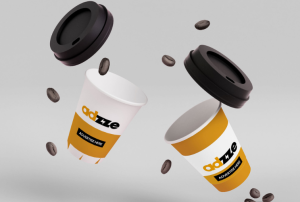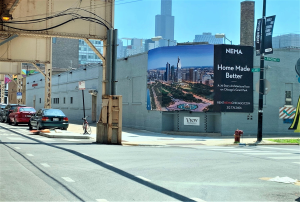In the world of modern marketing, brands are continually searching for ways to engage consumers meaningfully, build loyalty, and resonate with evolving values. One of the most significant shifts in consumer behavior over the past few years is an increased demand for sustainability. As more consumers become environmentally conscious, they’re paying close attention to the brands they support, with many favoring companies that prioritize eco-friendly practices.
Coffee cup sleeves, traditionally designed to protect customers from hot drinks, are now emerging as a unique canvas for advertising. As their visibility increases, they present an innovative and cost-effective advertising solution, especially in coffee shops, offices, and on-the-go scenarios. However, simply using coffee cup sleeves as a marketing tool isn’t enough. If you want to truly connect with today’s eco-conscious consumer, sustainability must be at the heart of your strategy.
Why Sustainability Matters in Coffee Cup Sleeves Advertising
As brands seek to build deeper connections with their customers, sustainability has become a critical pillar. Research shows that consumers are increasingly willing to pay a premium for products and services that align with their values—especially those that focus on environmental conservation. For example, a 2020 survey revealed that 73% of global consumers would change their consumption habits to reduce their environmental impact.
Sustainability in coffee cup sleeves isn’t just about reducing waste; it’s about meeting the growing consumer demand for responsible marketing practices. In the context of coffee cup sleeves, brands have a unique opportunity to incorporate eco-friendly messaging into their campaigns, allowing them to promote their products while contributing positively to the environment. When done right, sustainable coffee cup sleeve marketing can lead to stronger consumer trust, more loyal customers, and an improved brand image.
1. Consumer Demand for Eco-friendly Products
As noted earlier, today’s consumers care about the environmental footprint of the products they purchase. Many are actively seeking brands that align with their values and make an effort to reduce their environmental impact. By using eco-friendly coffee cup sleeves, marketers can demonstrate their commitment to sustainability and appeal to a broader audience of conscious consumers. This can be particularly effective in the food and beverage industry, where single-use packaging has become a major concern.
2. Increasing Environmental Concerns
Coffee shops and cafes are some of the highest producers of single-use packaging—many coffee cups and sleeves end up in landfills after just a short period of use. Consumers, particularly millennials and Gen Z, are increasingly aware of this waste problem and are holding brands accountable for their role in it. As a result, businesses that prioritize sustainability and move away from plastic or non-recyclable materials are more likely to build consumer trust and loyalty.
3. Government Regulations and Industry Trends
Government regulations surrounding packaging and waste management are tightening. Several cities and countries have already introduced bans on single-use plastics and are incentivizing the use of sustainable materials. In the coffee industry, this has led to an increased emphasis on recyclable, biodegradable, and compostable alternatives. Marketers who stay ahead of these trends can position themselves as leaders in sustainability while avoiding potential fines or penalties.
The Environmental Impact of Traditional Coffee Cup Sleeves
To understand the importance of sustainability in coffee cup sleeves, it’s crucial to first examine the environmental impact of traditional sleeves. Most coffee cup sleeves are made from materials like polystyrene foam, plastic, or non-recyclable cardboard, which are harmful to the environment.
1. Plastic Pollution
A large portion of coffee cup sleeves are still made from plastic, which is non-biodegradable. When disposed of improperly, these sleeves can contribute to plastic pollution in landfills, rivers, and oceans, where they can take hundreds of years to break down.
2. Excessive Waste
The sheer volume of coffee cups and sleeves used worldwide creates a significant waste problem. According to a report by the National Coffee Association, over 50 billion coffee cups are used in the U.S. alone each year. Many of these cups end up in landfills due to improper disposal or lack of recycling infrastructure. Since coffee cup sleeves are designed for single-use, they contribute significantly to this growing waste stream.
3. Non-Recyclable Materials
Many coffee cup sleeves are made from materials that aren’t easily recyclable, such as polystyrene or plastic-lined paper. While some coffee cups themselves are recyclable, the combination of plastic and paper in the sleeve often makes them unsuitable for recycling. This results in wasted resources and a larger environmental footprint.
Sustainable Alternatives for Coffee Cup Sleeves
Given the significant environmental impact of traditional coffee cup sleeves, marketers have a unique opportunity to make a positive change by switching to sustainable alternatives. By opting for eco-friendly materials, brands can reduce waste, lower their environmental impact, and demonstrate their commitment to responsible practices.
Here are some sustainable alternatives that can be used in coffee cup sleeve advertising:
1. Recyclable Paper and Cardboard
One of the most popular sustainable alternatives is recyclable paper or cardboard. These materials are easily recyclable and biodegradable, making them much more eco-friendly than plastic sleeves. Brands can look for paper suppliers that use recycled content or sustainable forestry practices to ensure their coffee cup sleeves are made with the least environmental impact.
2. Compostable Materials 
Compostable coffee cup sleeves are another excellent alternative. These materials, made from natural fibers such as bamboo, sugarcane, or cornstarch, break down naturally in composting environments. While composting infrastructure isn’t available everywhere, these materials are much better for the environment than traditional non-recyclable options.
3. Plant-Based Plastics (Bioplastics)
While traditional plastic takes hundreds of years to break down, bioplastics made from plant-based materials like cornstarch or sugarcane offer a more sustainable solution. These bioplastics are biodegradable and can be composted in industrial facilities, making them an excellent choice for eco-conscious brands.
4. Upcycled Materials
Using upcycled materials in coffee cup sleeves is another innovative approach to sustainability. By using materials that would otherwise end up in landfills—such as upcycled fabrics, paper waste, or even old plastic bottles—brands can contribute to the circular economy and reduce the demand for virgin materials.








